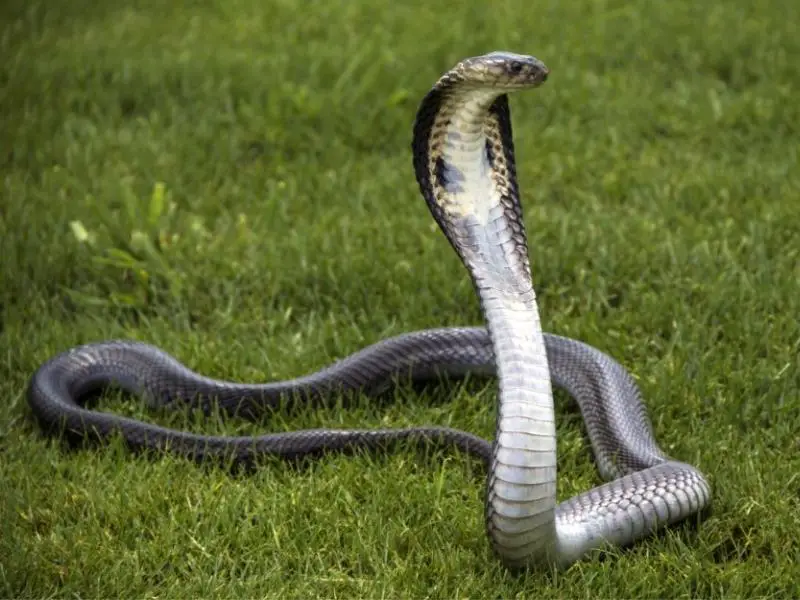
Description:
Scientific name: Naja kaouthia
Life span: 13–20 years
A venomous cobra, the monocled cobra (Naja kaouthia), is also known as the monocellate cobra or the Indian spitting cobra. On the back of their hood, which is O-shaped or monocellate in shape, is the “spectacle” design, which consists of two circular ocelli joined by a curved line. Juvenile Monocled cobras can range in colour from yellow to brown to grey to blackish, with or without ragged or distinct cross bands. They can have an O-shaped, yellow or orange mark on the hood, or they can be olivaceous, brownish, or even black above.

Native Region/Habitat
From India in the west through China, Vietnam, and Cambodia, monocled cobras can be found. These cobras can be found in grasslands, shrublands, and woodlands, although they favour areas with water, like paddy fields, swamps, and mangroves.
Behavior:
The monocled cobra is a land animal. They lurk in rodent burrows in the dykes separating fields in rice-growing regions, where they have evolved into semi-aquatic species. These snakes live alone and are most active in the evening. They are frequently discovered in places with lots of rodent activity and in tree holes. Monocled cobras prefer to take flight when agitated.
Care As a pet/In captivity:
Enclosure: A terrarium with at least 40 liters of water should be used to accommodate a single monocled cobra. The cage should be at least 110 inches across to allow enough of ground space and 20 inches height to accommodate climbing structures because the snake is primarily terrestrial but also enjoys climbing.
Temperature and Humidity: 74–82°F is the perfect temperature range for a monocled cobra enclosure. Two-thirds of the tank’s ambient temperature should be 74°F, while the basking area’s temperature should be 82°F. By wandering between hot and cool sections of the container, the snake may control the temperature of its interior body.
By placing a bowl of water in the centre of the enclosure and spraying the tank once or twice daily, the humidity in the tank can be kept between 50% and 60%. Throughout the day, keep an eye on the humidity with a hygrometer.
Food and Water: Monocled cobras consume small snakes, fish, and animals in the wild. Give frozen and thawed mice and rats to captive monocled cobras as a carnivorous diet, with the occasional addition of chicks, quail, hamsters, or gerbils to change things up. When feeding the snake, make sure all the food has been disposed of humanely because live food can hurt or bite it.
Feed adult snakes one huge mouse or an equivalent-sized mammal for variety each week. Feed newborn monocled cobras two pinky mice each week. Put fresh water in a shallow basin or tray that the snake can readily access.
Table





